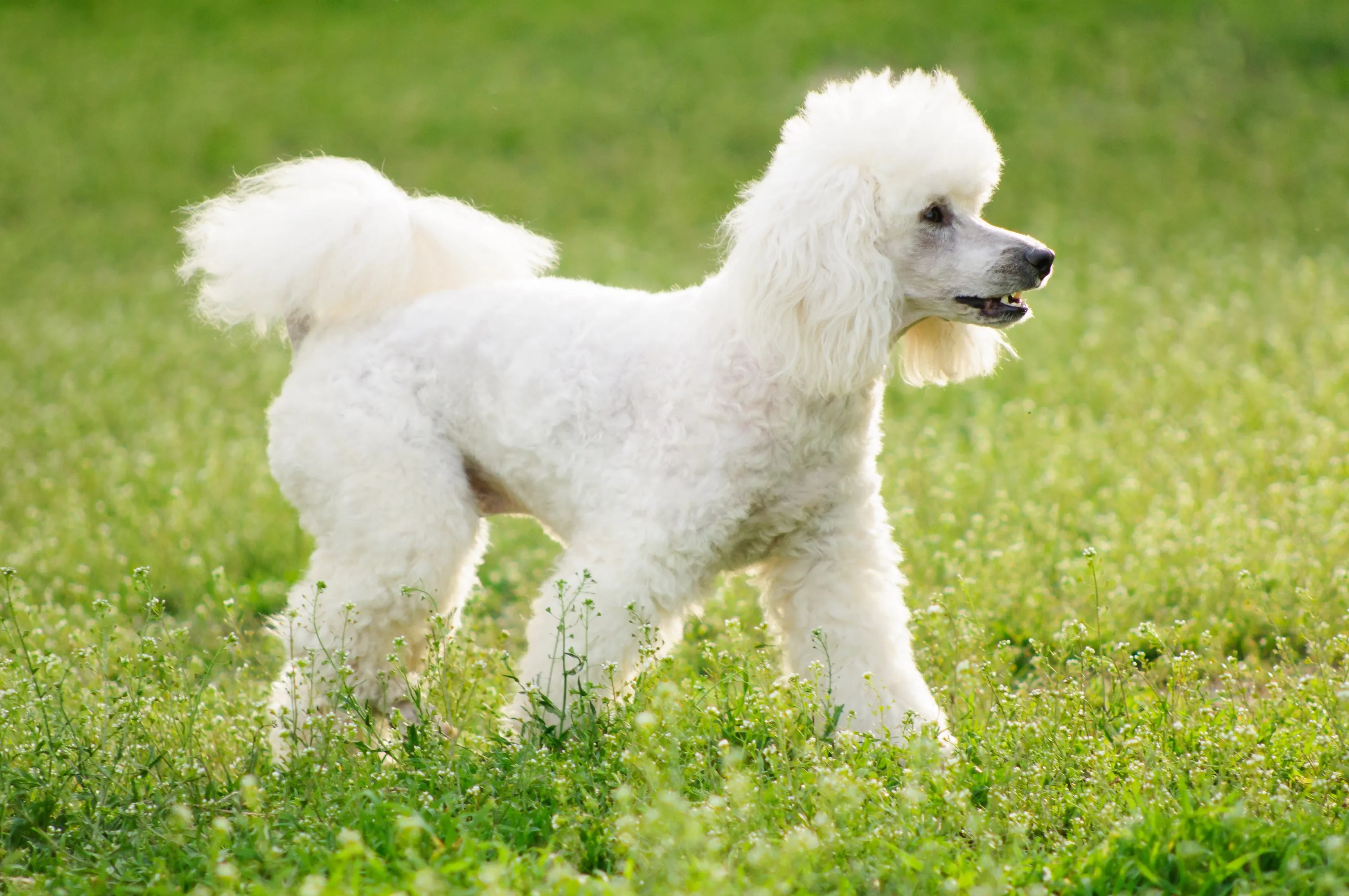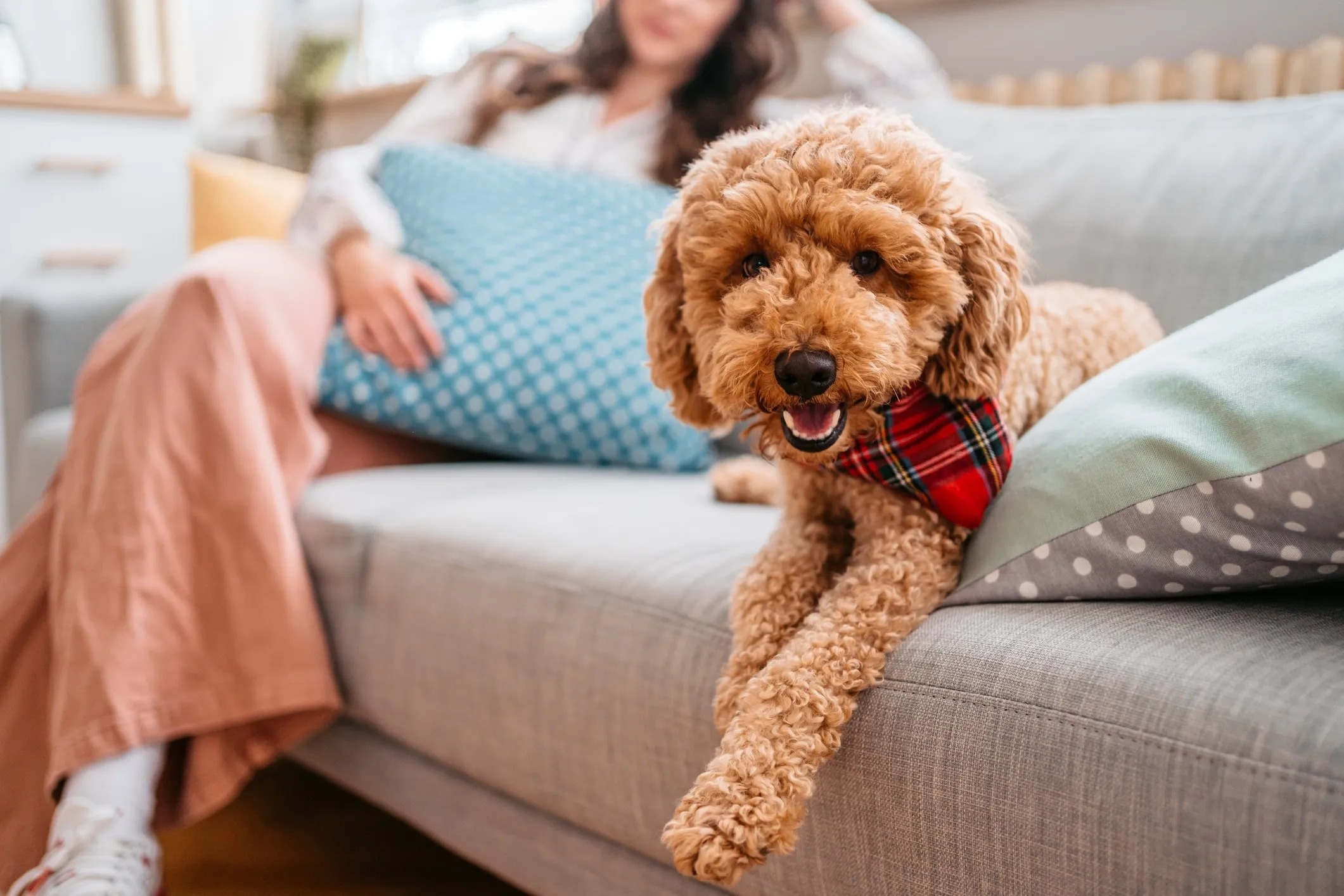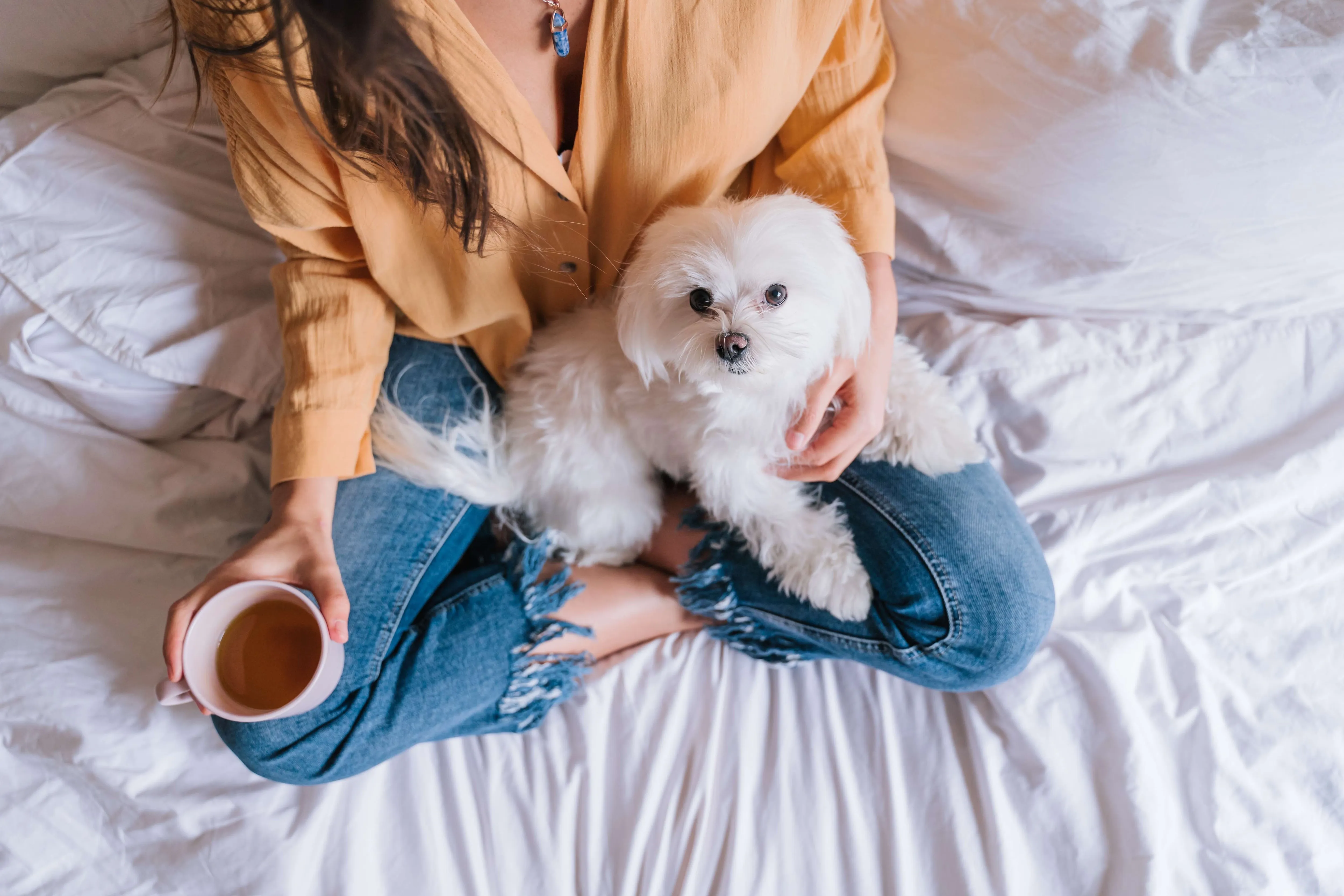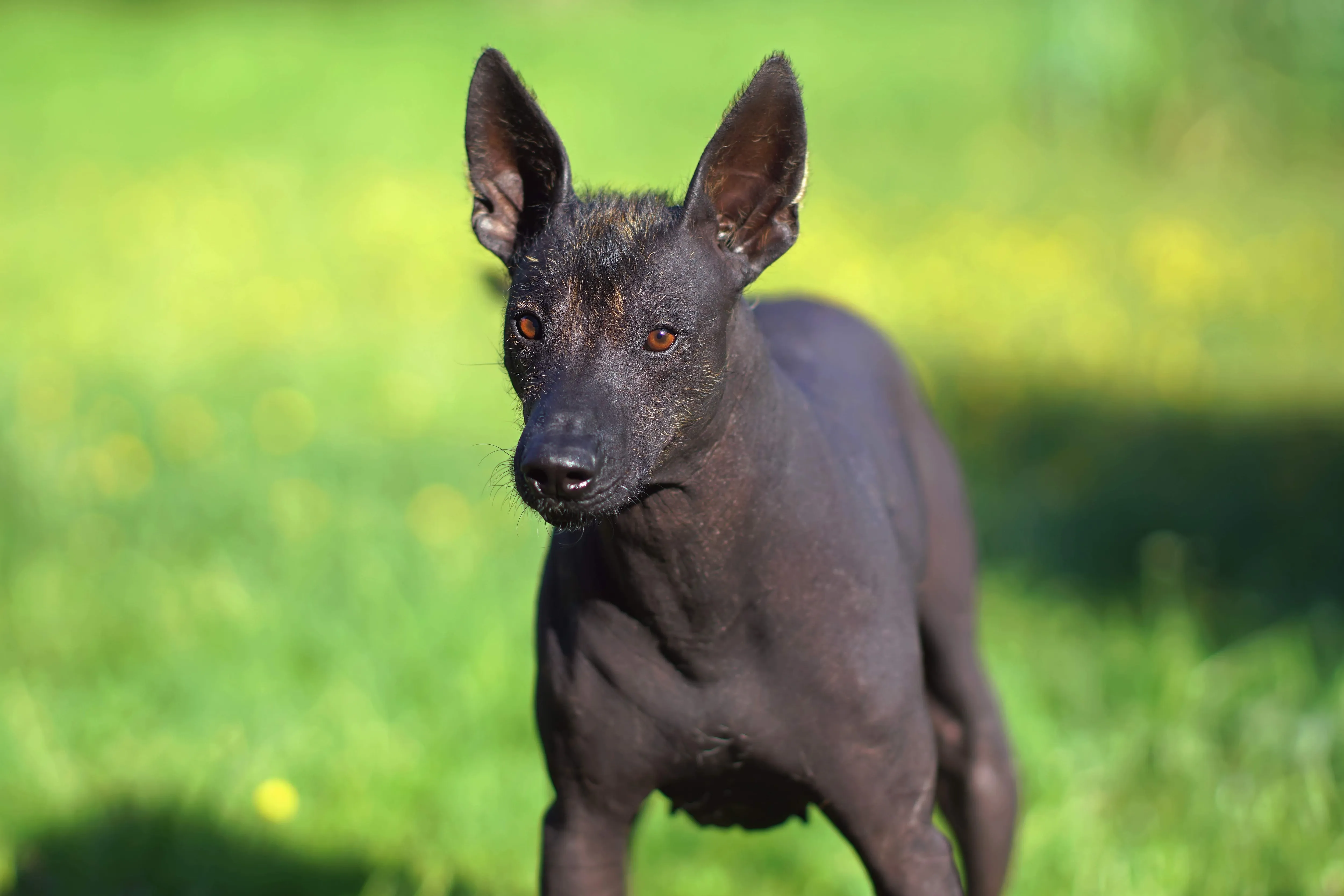For many dog lovers, the joy of pet ownership comes with a minor caveat: shedding. Loose hair can accumulate on furniture, clothing, and floors, requiring constant cleaning. For individuals with allergies, shedding can exacerbate symptoms, making dog ownership challenging. Fortunately, numerous dog breeds are known for their minimal shedding, offering a wonderful solution for those seeking a cleaner home and fewer allergen triggers. These “low-shedding” dogs, often referred to as hypoallergenic, can significantly reduce the amount of pet dander and hair released into your environment, making them ideal companions for many households.
This comprehensive guide explores the world of dogs that don’t shed a lot of hair, debunking myths about hypoallergenic breeds and introducing you to some of the best choices available. We will also provide essential tips for living with these special pups to ensure both you and your furry friend enjoy a happy and healthy life together. Understanding which breeds fit this description and how to manage their unique grooming needs can make all the difference in finding your perfect canine match.
Understanding Low-Shedding and “Hypoallergenic” Dogs
The term “hypoallergenic” is often used to describe dogs that don’t shed a lot of hair, but it’s important to understand what this truly means. All dogs produce allergens, primarily found in their skin (dander), saliva, and urine, not just their hair. However, breeds that shed less hair also release less dander into the environment, which is typically what triggers allergic reactions in sensitive individuals. Therefore, while no dog is 100% allergen-free, low-shedding breeds are generally a much better fit for those with mild to moderate dog allergies or anyone who prefers a home with less dog hair.
These dogs often have coats that are more akin to human hair than typical dog fur, growing continuously with a longer anagen (growth) phase and a shorter telogen (resting) phase. This means that instead of shedding dead hair frequently, the hair tends to stay in the follicle until it’s brushed out or naturally falls out after a much longer period. This characteristic significantly reduces the amount of hair and dander dispersed in the home, offering a noticeable difference compared to heavy-shedding breeds.
Top Dog Breeds That Don’t Shed Much Hair
While the concept of a completely allergen-free dog is a myth, many breeds are renowned for their low-shedding coats, making them excellent choices for allergy sufferers or those seeking less fur around the house. These breeds often require specific grooming routines to keep their coats healthy and tangle-free, which also helps in minimizing any potential shedding. Let’s explore some of the most popular and beloved low-shedding dog breeds.
1. Poodle
Poodles are perhaps the quintessential low-shedding breed, available in three sizes: Standard, Miniature, and Toy. Each type is celebrated for its curly, dense coat that sheds minimally. Beyond their elegant appearance, Poodles are highly intelligent and easily trainable, making them versatile companions. Originally bred for hunting, particularly water retrieval, Standard Poodles are robust and active, while Miniature and Toy Poodles offer the same intelligence and charm in a smaller package. Regular grooming is essential for Poodles to prevent their curls from matting.
 A fluffy white Poodle walks gracefully through green grass.
A fluffy white Poodle walks gracefully through green grass.
2. Yorkshire Terrier
Known for their spirited personalities and silky coats, Yorkshire Terriers are small dogs that shed very little. Yorkies, as they are affectionately called, possess an adaptable nature, thriving in various living environments from large houses to cozy apartments, provided they receive ample affection and engagement from their families. Their fine, human-like hair requires consistent grooming to maintain its luxurious texture and prevent tangles. These adorable dogs offer big personalities in a small, low-shedding package.
3. Shih Tzu
The Shih Tzu is an ancient companion breed with a friendly temperament and a long, flowing double coat that is surprisingly low-shedding. Despite their thick hair, Shih Tzus primarily shed dead hairs that get caught in their coat, which can be managed with regular brushing. However, their distinctive flat faces can predispose them to certain health issues like overheating and breathing problems, as well as tear stains. Consistent eye care and grooming are crucial for their well-being.
4. Miniature Schnauzer
One of three Schnauzer breeds, the Miniature Schnauzer is the smallest, typically weighing 10–20 pounds and standing up to 14 inches tall. These smart and robust dogs possess a wiry outer coat and a soft undercoat that sheds very little. Their compact size and adaptable nature make them suitable for many living situations, though they require at least an hour of daily exercise to stay happy and healthy. Their distinctive beard and eyebrows are part of their charm and need regular trimming.
5. Standard Schnauzer
The Standard Schnauzer offers all the beloved qualities of the Miniature Schnauzer in a larger, more powerful form, often weighing up to 45 pounds. They also feature a dense, wiry coat that sheds sparingly, making them a great option for those seeking a larger low-shedding dog. Standard Schnauzers are active and intelligent, thriving on long walks, games of fetch, and mentally stimulating activities. Consistent training and socialization are key to managing their energetic nature.
6. Giant Schnauzer
As their name suggests, Giant Schnauzers are the largest of the Schnauzer family, capable of reaching over 27 inches in height and weighing up to 85 pounds. Despite their imposing size, they maintain the family’s characteristic low-shedding, wiry coat. These powerful dogs demand significant daily exercise, including long walks, runs, and hikes, to channel their abundant energy and ensure they remain well-behaved and content. Their striking presence and loyalty make them formidable yet gentle companions.
7. Bichon Frise
With their playful demeanor and affectionate nature, Bichon Frise dogs are small, cheerful pups sporting a curly, white coat that sheds very little. Their high intelligence and eagerness to please make them highly trainable, quickly mastering basic commands and delighting families with their clever tricks. Regular grooming is necessary to prevent their dense, soft coat from matting. The Bichon Frise is an ideal choice for families seeking a lively, charming, and low-shedding companion.
 A small white Bichon Frise dog looks intently upwards while sitting in green grass.
A small white Bichon Frise dog looks intently upwards while sitting in green grass.
8. Chinese Crested
The Chinese Crested is a unique small breed known for its distinctive appearance. It comes in two varieties: the Hairless, with smooth skin and tufts of hair on its head, tail, and paws; and the Powderpuff, covered in a long, silky coat. Both varieties are considered low-shedding. These dogs are playful, affectionate, and make wonderful, loving companions, adapting well to indoor living. Their unique coats require special care, with the Hairless needing skin protection and the Powderpuff needing regular brushing. You might even find some fascinating mixes like a show me a picture of a yorkie poo which combines the traits of low-shedding Yorkies and Poodles, reflecting the diverse world of canine companions.
9. Portuguese Water Dog
Originally bred to assist fishermen in Portugal, the Portuguese Water Dog is a medium-sized breed with a thick, curly coat that sheds minimally. This makes them a popular choice among low-shedding breeds. Highly intelligent, trainable, and friendly, these energetic dogs thrive on regular exercise, especially activities that involve water, like swimming. Playing fetch with floating toys is an excellent way to keep these water-loving pups happy and healthy. Their active nature means they need engaged owners ready for adventure.
10. Labradoodle
A popular crossbreed between a Labrador Retriever and a Poodle, the Labradoodle was initially developed to be a hypoallergenic service dog. They inherit the Poodle’s low-shedding coat and the intelligence and friendly nature of both parent breeds. Labradoodles are known for being highly trainable, gentle, and excellent family pets, particularly when properly exercised and socialized from a young age. Their lovable disposition and minimal shedding make them a fantastic addition to many homes.
11. Goldendoodle
Another beloved “doodle” breed, Goldendoodles are a cross between a Golden Retriever and a Poodle. Like Labradoodles, they typically have low-shedding coats and are praised for their friendly temperament and high intelligence. While many are known for their beautiful golden coats, they can display a wide array of colors and textures. Frequent grooming with a dog slicker brush is essential to prevent their often wavy or curly coats from matting and to keep them looking their best.
 A beautiful Goldendoodle relaxes on a couch with a person in the background.
A beautiful Goldendoodle relaxes on a couch with a person in the background.
12. Lagotto Romagnolo
Originating as water retrievers in Italy, Lagotto Romagnolo dogs possess a distinctive curly, woolly coat that protected them from cold waters and sheds minimally. Though less common, these dogs are known to be good with children and other pets, making them excellent family dogs. They are intelligent and active, requiring mental stimulation and physical activity to prevent boredom. Their unique coat requires specific grooming to maintain its texture and prevent matting.
13. Affenpinscher
Affenpinschers are small dogs recognized for their monkey-like facial expressions and dense, wiry coats that produce fewer allergens than many other breeds. While low-shedding, their unique coats demand considerable care, including regular at-home brushing and professional stripping—a process where dead hair is removed from the root rather than simply trimmed. This meticulous grooming helps maintain their coat’s texture and minimizes shedding.
14. Irish Water Spaniel
Friendly, intelligent, and highly trainable, the Irish Water Spaniel is another water dog breed originally used for retrieving game. Their thick, curly, liver-colored coat requires regular grooming but sheds very little. These high-energy dogs need substantial exercise to remain happy and healthy, making them suitable for active individuals or families who can provide plenty of physical activity. Their distinctive topknot and robust build add to their charm.
15. Aussiedoodle
The Aussiedoodle is a cross between an Australian Shepherd and a Standard or Miniature Poodle, combining the intelligence and energy of both parent breeds. This low-shedding dog is exceptionally smart and active. Without adequate exercise and mental stimulation, Aussiedoodles can become bored and potentially destructive. Therefore, plenty of outdoor activities, training, and enrichment toys are essential to keep an Aussiedoodle happy and engaged.
16. Bolognese
Hailing from Italy, Bolognese dogs are cute, playful, and easygoing pups with a long, fluffy white coat that sheds minimally. Despite their characteristic “messy” appearance, their coat needs regular grooming to prevent tangles and maintain its pristine look. Bolognese dogs are known for getting along well with children and other pets and can adapt to various living situations, making them delightful companions for many households.
17. Maltese
The Maltese is a small, elegant dog known for its luxurious, flowing white coat that sheds very little. They make affectionate and playful companions, thriving on close human interaction. While their long coat is stunning, it demands dedicated grooming to prevent matting and keep it clean. Many owners opt for a shorter “puppy cut” to simplify grooming, which can be easily managed with dog hair grooming clippers at home. The Maltese is a delicate yet hardy breed, offering years of devoted companionship.
 A woman gently holds a small white Maltese dog on a bed.
A woman gently holds a small white Maltese dog on a bed.
18. Soft Coated Wheaten Terrier
As its name suggests, the Soft Coated Wheaten Terrier has an incredibly silky, soft coat that sheds minimally. This medium-sized Irish breed maintains a high energy level throughout its life, requiring ample exercise and mental stimulation to prevent boredom and ensure good behavior. Wheatens are known for their joyous and enthusiastic personalities, making them engaging family pets who love to be involved in all household activities.
19. Coton de Tulear
Originating in Madagascar, the Coton de Tulear is a small, easygoing low-shedding breed. Their gentle nature makes them an excellent fit for families with children and other pets, especially when introductions are managed thoughtfully. Cotons are known for their soft, cotton-like coats that, while low-shedding, require regular brushing to keep them free of mats. These charming dogs thrive on companionship and are content in various living environments.
20. Schnoodle
The Schnoodle is a designer breed resulting from the crossing of two low-shedding breeds: the Schnauzer and the Poodle. Their coat can be curly or wavy, depending on which parent’s genetics are more dominant, but it consistently remains low-shedding. Schnoodles combine the intelligence and alertness of Schnauzers with the playful and affectionate nature of Poodles, making them highly adaptable and delightful companions for families.
21. Bedlington Terrier
Often likened to “a lamb in dog’s clothing,” the Bedlington Terrier is a small, curly-haired breed distinguished by its unique topknot hairdo and pom-pom ear tufts. This low-shedding dog forms strong bonds with its human family and can be prone to separation anxiety if left alone for extended periods. Monitoring their activity with a dog camera can help manage and address any signs of anxiety. Their gentle demeanor and distinctive look make them truly special.
22. Xoloitzcuintli (Mexican Hairless Dog)
One of the oldest and rarest dog breeds, the Xoloitzcuintli, also known as the Mexican Hairless Dog, is naturally low-shedding due to its often hairless body. Available in three sizes (toy, miniature, and standard), the breed can also have a short, smooth coat. Both hairless and short-coated Xolos are considered low-shedding. These intelligent and calm dogs are loyal companions, deeply affectionate with their families, and make intriguing pets.
 A black Mexican Hairless dog (Xoloitzcuintli) stands gracefully in green grass.
A black Mexican Hairless dog (Xoloitzcuintli) stands gracefully in green grass.
23. Whoodle
A cross between a Soft-Coated Wheaten Terrier and a Poodle, the Whoodle is a friendly dog that inherits the low-shedding qualities of both parent breeds. These delightful dogs are known for their intelligence and affectionate nature, making them highly adaptable and eager-to-please companions. Whoodles thrive on human interaction and are excellent family pets, requiring regular exercise and grooming to keep their soft, wavy to curly coats in prime condition.
24. Bernedoodle
Bernedoodles are a charming crossbreed of Bernese Mountain Dogs and Poodles, resulting in large low-shedding dogs known for their friendly, affectionate nature and gentle demeanor. These qualities make them a popular choice for families with children and other pets. Bernedoodles require ample exercise to stay active and happy, benefiting from regular walks and playtime. Their gentle giant persona combined with minimal shedding makes them a wonderful family companion.
25. Shorkie
The Shorkie is a mixed breed combining two low-shedding dogs: the Shih Tzu and the Yorkshire Terrier. These small, playful, and friendly dogs embody the best traits of both parent breeds. Like most dogs on this list, Shorkies require a dedicated and regular grooming routine to maintain their long, fine coats and prevent matting. Their compact size and loving disposition make them ideal lap companions.
26. Afghan Hound
Afghan Hounds are striking dogs, famed for their long, flowing coats and slender, athletic builds. While their dramatic coats demand significant grooming, they are considered low-shedding, with hair that grows continuously rather than shedding seasonally like many other breeds. These majestic pups are built for speed and are one of the fastest dog breeds. Afghan Hounds are loving towards their family but can be aloof with strangers, highlighting the importance of early and consistent socialization. You might want to consider all breeds when thinking about white german shepherd puppies for sale or trying to show me pictures of a chow chow, but remember to prioritize those truly known for minimal shedding if that’s a key concern.
27. Barbet
Pronounced “bar-bay” and named after the French word for “beard,” the Barbet is a cheerful pup with a shaggy, woolly coat that sheds minimally. These big low-shedding dogs adore swimming, a trait enhanced by their protective curly coats. To keep a Barbet’s coat in excellent condition, especially after water activities, regular brushing with a slicker or pin brush two to three times a week is necessary. Their robust and joyful nature makes them excellent family pets, particularly for active homes.
28. Shih-Poo
The Shih-Poo is a charming mixed breed, typically a cross between a Shih Tzu and a Toy Poodle. This small, low-shedding pup adapts well to almost any living situation, provided they receive about 30 minutes of daily exercise and a good brushing session. Shih-Poos are affectionate, playful, and thrive on companionship, making them wonderful additions to families looking for a lively yet low-maintenance shedding-wise dog.
29. Peruvian Inca Orchid
Peruvian Inca Orchids are rare, ancient dogs that are naturally low-shedding thanks to their often hairless bodies, though some are short-coated. They come in small, medium, and large sizes and are recognized as the national dog of Peru. These elegant and agile dogs are known for being intelligent, affectionate, and protective of their families, making unique and loyal companions for those who appreciate their distinctive qualities.
30. Malshi
A cross between the Maltese and Shih Tzu, the Malshi is a happy, small, and low-shedding dog. They thrive on close companionship and are most content when surrounded by their favorite humans. Malshis are playful and affectionate, making them ideal lap dogs and family members. While their shedding is minimal, they do require consistent grooming to keep their soft, flowing coats in good condition, ensuring they remain comfortable and beautiful. When looking into different breeds, you might compare these low-shedding options with breeds like the Basset Hound; for example, if you’re curious about basset hound puppies for sale price, always consider their shedding levels and grooming needs carefully.
Essential Tips for Living with a Low-Shedding Dog
Even with a dog that doesn’t shed a lot of hair, managing dander and maintaining a clean environment is crucial, especially for allergy sufferers. Here are some practical tips to ensure a harmonious home for everyone.
Keep Up With Regular Grooming
Low-shedding dogs often require more dedicated grooming and maintenance compared to heavy-shedders whose hair falls out naturally. Their coats tend to grow continuously and can easily tangle and mat without proper care.
- Brushing: Regular brushing, often daily or several times a week, is vital to remove dead hairs before they can shed and to prevent mats. The type of brush depends on the coat texture (e.g., slicker brush for Poodle mixes, pin brush for longer coats).
- Bathing: Bathe your dog every four to six weeks, or as recommended by your veterinarian or groomer. Using a specialized shampoo, such as an allergen-reducing formula, can help minimize pet dander.
- Trimming/Stripping: Many low-shedding breeds require regular professional grooming for trimming, clipping, or hand-stripping their coats to maintain health and prevent discomfort. Budget for these services or learn how to perform them at home.
Maintain a Clean Home Environment
Minimizing allergens in your home goes beyond just grooming your dog. A proactive approach to cleaning can significantly improve air quality and reduce dander.
- Vacuuming and Dusting: Regularly vacuum floors and furniture, ideally with a vacuum cleaner equipped with a HEPA filter. Dust surfaces frequently, as dander can settle everywhere.
- Washing Bedding: Wash your dog’s bedding, as well as your own, regularly in hot water to eliminate allergens.
- Air Purification: Utilize air purifiers with HEPA filters to capture airborne allergens.
- Ventilation: Keep your home well-ventilated by opening windows when possible or using air conditioning with good filtration to circulate fresh air.
Consult Your Healthcare Provider
If you or a family member has dog allergies, managing symptoms is paramount. While a low-shedding dog can help, it’s essential to consult with a healthcare provider or allergist.
- Allergy Management: Your doctor can advise on various allergy treatments, including antihistamines, nasal sprays, or allergy shots (immunotherapy), to help control reactions.
- Avoid Contact: Even with a low-shedding dog, allergens are present in their saliva and urine. Avoid close facial contact and always wash your hands after petting your dog.
- Designated “Allergen-Free” Zones: Consider creating areas in your home, such as bedrooms, where your dog is not allowed, to provide an allergen-free sanctuary.
Bringing a dog that doesn’t shed a lot of hair into your home can truly enhance your quality of life, especially for those with allergies. These breeds offer the joy of canine companionship with the added benefit of a cleaner living space and fewer allergen concerns. By choosing wisely and committing to consistent grooming and home maintenance, you can experience the profound bond with a pet without the constant worry of shedding and allergic reactions.
